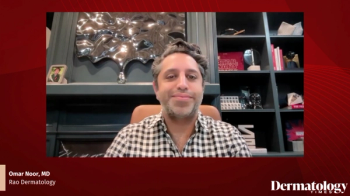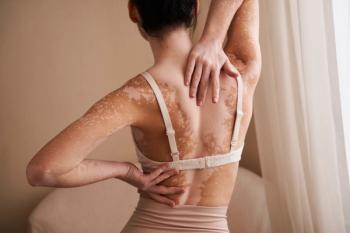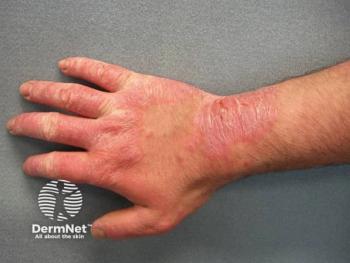
Hyaluronic Acid Boosts Results in Rosacea Management
Key Takeaways
- Rosacea's visible symptoms cause significant psychosocial distress, impacting patients' quality of life. Its etiology involves genetic, environmental, and immune factors.
- Traditional treatments often fail to provide sustained relief, but energy-based devices (EBDs) and injectable hyaluronic acid (HA) show promise in improving outcomes.
Discover innovative rosacea treatments combining injectable hyaluronic acid with traditional therapies to enhance skin health and boost patient confidence.
Despite its prevalence, rosacea's impact on patients' quality of life is frequently underestimated. The visible nature of its symptoms can lead to significant psychosocial distress, including low self-esteem and social withdrawal.1
The etiology of rosacea is multifactorial. Genetic predisposition, environmental factors (such as UV exposure and temperature extremes), immune dysregulation, and vascular abnormalities all contribute to its pathophysiology. A common subtype, erythematous rosacea, is marked by persistent facial redness and transient flushing, often accompanied by heightened skin sensitivity and intolerance to many cosmetic products.2
Background
Traditional management strategies for rosacea emphasize symptom control through topical therapies like metronidazole or ivermectin, and systemic antibiotics such as doxycycline. Patients are also encouraged to avoid known triggers. However, these interventions often fall short of providing sustained relief or addressing the visible signs that most affect patients' confidence.3
In recent years, the integration of energy-based devices (EBDs) and novel adjunctive treatments has expanded therapeutic options. Laser and light therapies—such as the long-pulsed Nd:YAG, intense pulsed light (IPL), potassium titanyl phosphate (KTP), and pulsed dye laser (PDL)—have demonstrated efficacy in reducing telangiectasia and erythema by targeting hemoglobin within superficial vessels, leading to photocoagulation and vessel collapse.4
An emerging adjunct in rosacea treatment is injectable hyaluronic acid (HA). Traditionally recognized for its role in cosmetic dermatology, HA is a glycosaminoglycan naturally found in the extracellular matrix, valued for its hydrating, elastic, and regenerative properties. Recent insights suggest HA may also exert anti-inflammatory and antioxidant effects, potentially enhancing outcomes in inflammatory skin disorders like rosacea.5
Case Studies
A recent case series explores the integration of HA microinjections (specifically low-concentration, low-crosslinked formulations such as VYC-12L) with EBD therapies in rosacea patients.6 One such case involved a 52-year-old woman with persistent erythema and telangiectasia. Despite prior treatment with doxycycline and topical ivermectin, her symptoms persisted. Following sequential sessions of Nd:YAG and IPL, she received HA microinjections into the malar and nasolabial regions. Four months post-injection, standardized imaging confirmed visible reduction in erythema and overall improvement in skin texture.
Similarly, researchers described another case of a 38-year-old patient receiving HA treatment during a waiting period before initiating laser therapy. In combination with topical ivermectin and botanical cleansers, HA injections enhanced skin hydration and resilience. Subsequent laser treatments yielded enhanced cosmetic results, as verified by imaging assessments at follow-up.
In a third case, the review stated a patient received IPL followed by HA microinjections and monthly glycolic acid peels. Notably, no further interventions were necessary, and the patient reported high satisfaction levels alongside clinical improvements in skin texture and redness.
The potential mechanisms underlying HA's benefit in rosacea are manifold. HA may fortify the skin barrier, modulate extracellular matrix components, and alleviate laser-induced dryness. Furthermore, its synergy with EBDs may stem from enhanced dermal hydration and a supportive scaffold for post-laser regeneration. While some suggest HA might also exert mild angiostatic effects, more robust data are needed to substantiate this claim.
Interestingly, patient-reported outcomes often indicate greater satisfaction than objective imaging suggests. This discrepancy may reflect HA’s ability to improve the subjective feel and hydration of skin, elements not fully captured by standard photography.
Conclusion
Overall, researchers stated injectable HA appears to be a promising adjunct in the multimodal treatment of rosacea, particularly when paired with laser and light-based interventions. It offers an avenue to not only improve clinical outcomes but also address the psychological burden of the disease. As evidence accumulates, the review stated further research is essential to refine treatment protocols, understand mechanisms of action, and identify patient populations most likely to benefit.
References
- Huynh TT. Burden of disease: The psychosocial impact of rosacea on a patient's quality of life. Am Health Drug Benefits. 2013;6(6):348-354.
- Searle T, Al-Niaimi F, Ali FR. Rosacea. Br J Hosp Med (Lond). 2021;82(2):1-8. doi:10.12968/hmed.2020.0417
- Sharma A, Kroumpouzos G, Kassir M, et al. Rosacea management: A comprehensive review. J Cosmet Dermatol. 2022;21(5):1895-1904. doi:10.1111/jocd.14816
- Piccolo D, Fusco I, Zingoni T, Conforti C. Effective treatment of rosacea and other vascular lesions using intense pulsed Llght system emitting vascular chromophore-specific wavelengths: A clinical and dermoscopical analysis. J Clin Med. 2024;13(6):1646. Published 2024 Mar 13. doi:10.3390/jcm13061646
- Pieretti G, Rafaniello C, Fraenza F, et al. Hyaluronic acid-based fillers in patients with autoimmune inflammatory diseases. J Cosmet Dermatol. 2023;22(9):2420-2423. doi:10.1111/jocd.15751
- Proietti I, Kus S, Amore E, et al. Integrative rosacea treatment: Combination of a low crosslinked injectable hyaluronic acid filler with standard therapeutical interventions-An international real world case series. J Cosmet Dermatol. 2025;24(4):e70199. doi:10.1111/jocd.70199
Newsletter
Like what you’re reading? Subscribe to Dermatology Times for weekly updates on therapies, innovations, and real-world practice tips.



















